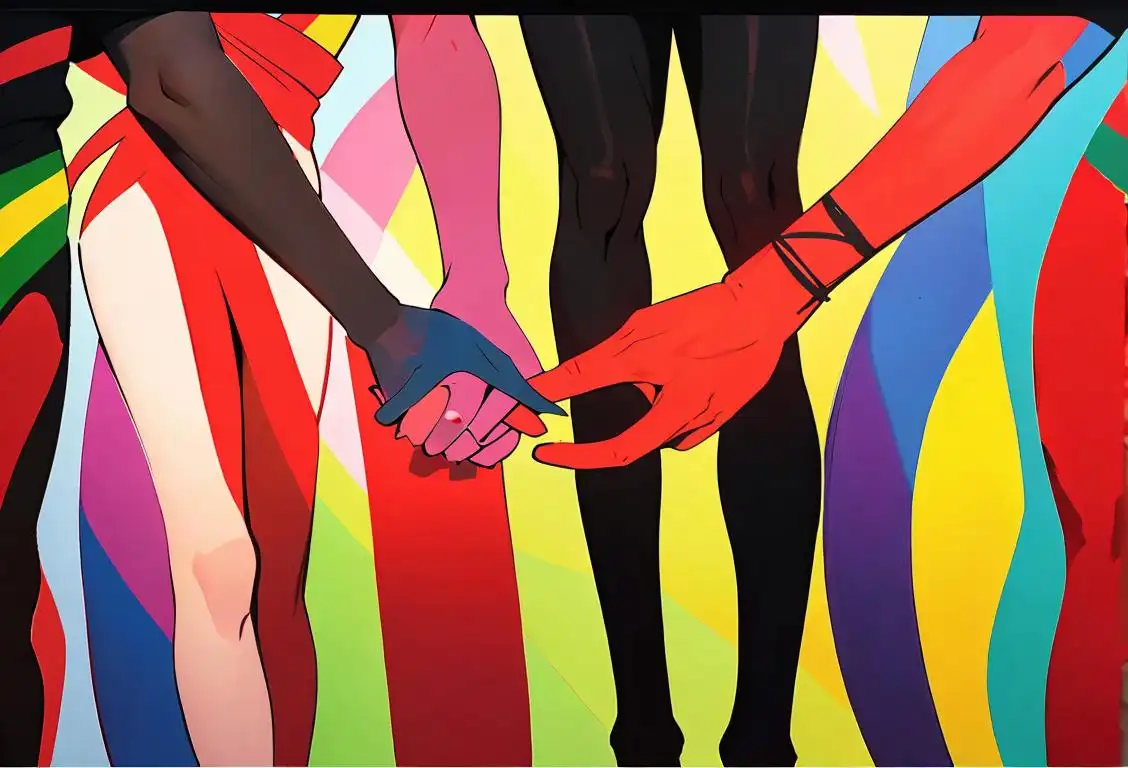National Vitiligo Day

Hey there! Welcome to the fascinating world of National Vitiligo Day! Get ready to learn all about this special day and the internet history behind it.
When is Vitiligo Day?
It's national vitiligo day on the 26th June.
The Origins of National Vitiligo Day
National Vitiligo Day is a day dedicated to raising awareness about vitiligo, a condition that causes the loss of skin color in certain areas of the body. It's observed on June 25th every year, and people from all walks of life come together to spread understanding and support for those living with vitiligo.
The origins of National Vitiligo Day can be traced back to the internet, where an online community of individuals with vitiligo saw a need for increased awareness and acceptance. They realized that by designating a specific day, they could focus attention on the condition and its impact on millions of people worldwide.
In 2011, the first National Vitiligo Day was celebrated in Nigeria, organized by the Vitiligo Support and Awareness Foundation (VITSAF). The initiative gained traction, with more countries joining in to raise awareness about vitiligo and promote a positive and inclusive mindset towards individuals affected by the condition.
The Power of the Internet
The internet played a significant role in spreading the word about National Vitiligo Day. Online communities, social media platforms, and websites dedicated to vitiligo provided a platform for individuals to share their stories, pictures, and support for each other. Through viral campaigns and online fundraising efforts, the internet helped amplify the message of acceptance and understanding.
Today, National Vitiligo Day continues to gain recognition and support worldwide, thanks to the power of the internet and the tireless efforts of individuals committed to breaking down the stigma surrounding vitiligo.
History behind the term 'Vitiligo'
5th century BC
Ancient depictions
The origins of the term 'vitiligo' can be traced back to the 5th century BC, when ancient Indian texts, such as the Atharvaveda, mentioned a condition called 'nilika'. These texts describe the appearance of white patches on the skin, suggesting a recognition of vitiligo even in those ancient times.
1st century AD
Greek observations
Around the 1st century AD, ancient Greek physicians and philosophers, including Aretaeus of Cappadocia, discussed a condition known as 'leuké' or 'leukopathia'. These terms were used to describe the appearance of white spots on the skin, which they believed was caused by an imbalance of bodily fluids.
17th century
Latin terminology
In the 17th century, during the Renaissance period, the Italian physician and anatomist, Giovanni Battista Morgagni, coined the term 'vitiligo'. Derived from the Latin words 'vitium' meaning 'defect' and 'lēgō' meaning 'choose', Morgagni used this term to describe the condition characterized by depigmented patches on the skin.
19th century
Modern classification
It was not until the 19th century when vitiligo started to be recognized as a distinct medical condition. The Scottish physician, Robert Willan, categorized vitiligo as a separate disease and differentiated it from other skin disorders in his influential work 'On Cutaneous Diseases' published in 1808. This classification helped establish vitiligo as an important field of study for dermatologists.
20th century
Advancements in treatment
In the 20th century, significant advancements were made in understanding vitiligo and developing treatment options. The German dermatologist, Rudolf L. Virchow, proposed the theory of autoimmune involvement in vitiligo in 1856. Later, in the 1960s, the surgical technique of autologous skin grafting was introduced, providing a potential treatment option for individuals with extensive depigmentation.
Did you know?
Did you know that Michael Jackson, the King of Pop, had vitiligo? He faced public scrutiny and speculation about his changing appearance but used his platform to educate people about the condition and encourage acceptance.Tagged
awareness community healthFirst identified
25th June 2015Most mentioned on
26th June 2018Total mentions
185Other days
Black Hiv Aids Awareness Day
Mast Cell Disease Awareness Day
Social Prescribing Day
Vitiligo Day
Breastcancer Action Day
American Diabetes Association Alert Day
Donate Your Hair Day
Bleeding Day
Prescription Drug Take Back Day
Ostomy Awareness Day







